Your home town during WW2
Tue Feb 21, 2012 2:41 pm
.
Last edited by Mark Allen M on Sat Sep 01, 2012 11:31 am, edited 1 time in total.
Re: Your home town during WW2
Tue Feb 21, 2012 4:50 pm
Re: Your home town during WW2
Tue Feb 21, 2012 5:02 pm
I'm from Marquette, just to the West of you along lake Superior. Ive heard stories of armed guards protecting the ore docks and Bridges to them from Nazi saboteurs. My hunting camp near Big Bay had a special cabin built and a man assigned to patrol the area forests. The fear being the the Nazis would send spy's to burn the Forest.
Re: Your home town during WW2
Tue Feb 21, 2012 5:37 pm
I might add that The mines that I work at today provided the steel and iron that produced the tanks and jeeps guns and airplanes. And that ore went over the docks of Marquette, and into ships that had to pass through the locks at your great city before going south to the furnaces that produced for Ford and GM.
Re: Your home town during WW2
Tue Feb 21, 2012 6:05 pm
I've heard that there were AA gun emplacements protecting the Soo Locks during the war..I've never really researched it so I can't say it's true though.
My hometown was just a little farm village right on Michigan's southern state line..I don't know if the war effected it any more than thousands of similar small towns on the Home Front. I live in Battle Creek now..nearby Fort Custer was home to one of the largest POW camps in the country. There's even a small section of Fort Custer National Cemetery where some two dozen German POWs are buried (most were killed in a single incident..they were being returned from an agricultural work detail on a foggy night when their truck was hit by a train.)
SN
My hometown was just a little farm village right on Michigan's southern state line..I don't know if the war effected it any more than thousands of similar small towns on the Home Front. I live in Battle Creek now..nearby Fort Custer was home to one of the largest POW camps in the country. There's even a small section of Fort Custer National Cemetery where some two dozen German POWs are buried (most were killed in a single incident..they were being returned from an agricultural work detail on a foggy night when their truck was hit by a train.)
SN
Re: Your home town during WW2
Tue Feb 21, 2012 6:15 pm
My hometown had a B-29 factory.
They make C-130's there now.
They make C-130's there now.
Re: Your home town during WW2
Tue Feb 21, 2012 6:53 pm
Pittsburgh, PA. My family made steel. I'm from a small town North of the city named Ambridge. it is named in honor of American Bridge Company, the steel mill that built the housing for it's workers that started the town. Along the rivers steel was made. 95 million tons. At American Bridge and one other yard, they built 269 LST's. When you watch some of the historic D-Day films watch close. They shipped only partially built, and were finished as a crew took them over seas. To get out to the ocean they had their PA boating license number painted on the hulls. Many of these were never painted over and on D-Day many landings were made with the craft still sporting their PA number.
Nearby Beaver Falls had a huge factory that built Curtiss Electric Props. Lets not foget the many other things that were designed in or near Pit like the original design for the Jeep.
The factories had the fake cities laid out on them as well as anti aircraft guns.
Nearby Beaver Falls had a huge factory that built Curtiss Electric Props. Lets not foget the many other things that were designed in or near Pit like the original design for the Jeep.
The factories had the fake cities laid out on them as well as anti aircraft guns.
Re: Your home town during WW2
Tue Feb 21, 2012 7:45 pm
I am from Cambridge, New Zealand.
When WWII began in September 1939 the population of the town and surounding farming districts was around 5000 people. By September 1940, 550 young men and women from Cambridge were serving in the Armed Forces. Over the next five years many more hundreds joined up or were involved.
In WWII Cambridge men went away to serve in the New Zealand Army, the Royal New Zealand Air Force, the Royal Air Force, the Royal Australian Air Force, the Royal Navy, the Royal New Zealand Navy, the Royal Navy Fleet Air Arm, and the Merchant Navy.
Cambridge women joned the Women's Auxiliary Army Corps, the Women's Auxiliary Air Force, the Women's Royal Naval Service and the Red Cross Volunteer Aid Detachment. Several Cambridge nurses served in the Army on the front lines in North Africa and Italy. Cambridge also had girls serving in the Tuis in North Africa and Italy.
At home much was going on for the war effort. Cambridge was mainly a dairy farming community then and around seven dairy factories in the district were producing milk products for the war effort. A major effort was going on to build the Karapiro hydro electric dam, which had its own Army and Home Guard units to protect it from enemy action.
The town raised one of the first Home Guard units in NZ and was the first to reach Company stength in the whole nation. It continued to grow into a full battalion which is staggering for a small communtiy with most of its young men away overseas. There were also units of the Women's Volunteer Service, Country Women's Institute, Federated Farmers, Air Force Relations (who knitted woolens for the RNZAF), Emergeny Precautions Scheme and other wartime home front organisations in the town. Many of our girls were Manpowered into both the Woman's Land Army growing beef, lamb, pork and crops for the war effort, and into Munitions at the nearby Hamilton factory. From what I can make out form my research, virtually no-one in the entire community was untouched by the war, every person contributed in some way, even the kids who collected old tins for the Home Guard to make into jam tin bombs, and other war effort scrap.
The only major wartime installation however remained a mystery to most who lived here then, a top secret Air Force fuel storage facility was installed in the park next to the railway station as an emergency reserve should the enemy bomb the airfield supplies. It was in the centre of town and most never knew it was there.
You can read more about Cambridge's war effort on my website at http://www.cambridgeairforce.org.nz
When WWII began in September 1939 the population of the town and surounding farming districts was around 5000 people. By September 1940, 550 young men and women from Cambridge were serving in the Armed Forces. Over the next five years many more hundreds joined up or were involved.
In WWII Cambridge men went away to serve in the New Zealand Army, the Royal New Zealand Air Force, the Royal Air Force, the Royal Australian Air Force, the Royal Navy, the Royal New Zealand Navy, the Royal Navy Fleet Air Arm, and the Merchant Navy.
Cambridge women joned the Women's Auxiliary Army Corps, the Women's Auxiliary Air Force, the Women's Royal Naval Service and the Red Cross Volunteer Aid Detachment. Several Cambridge nurses served in the Army on the front lines in North Africa and Italy. Cambridge also had girls serving in the Tuis in North Africa and Italy.
At home much was going on for the war effort. Cambridge was mainly a dairy farming community then and around seven dairy factories in the district were producing milk products for the war effort. A major effort was going on to build the Karapiro hydro electric dam, which had its own Army and Home Guard units to protect it from enemy action.
The town raised one of the first Home Guard units in NZ and was the first to reach Company stength in the whole nation. It continued to grow into a full battalion which is staggering for a small communtiy with most of its young men away overseas. There were also units of the Women's Volunteer Service, Country Women's Institute, Federated Farmers, Air Force Relations (who knitted woolens for the RNZAF), Emergeny Precautions Scheme and other wartime home front organisations in the town. Many of our girls were Manpowered into both the Woman's Land Army growing beef, lamb, pork and crops for the war effort, and into Munitions at the nearby Hamilton factory. From what I can make out form my research, virtually no-one in the entire community was untouched by the war, every person contributed in some way, even the kids who collected old tins for the Home Guard to make into jam tin bombs, and other war effort scrap.
The only major wartime installation however remained a mystery to most who lived here then, a top secret Air Force fuel storage facility was installed in the park next to the railway station as an emergency reserve should the enemy bomb the airfield supplies. It was in the centre of town and most never knew it was there.
You can read more about Cambridge's war effort on my website at http://www.cambridgeairforce.org.nz
Re: Your home town during WW2
Tue Feb 21, 2012 9:58 pm
Exeter, NH was a small New England mill town of about 3,000. Virtually every major business (shoes, textiles, brass foundry) was doing war work and many residents worked at the nearby Portsmouth Naval Shipyard which alone, I believe, built more submarines than all of Japan during the war.
Re: Your home town during WW2
Tue Feb 21, 2012 11:30 pm
I live near Norfolk Naval Station and Oceana NAS. I imagine this area was swarming with aviation and ship activity during the war. We even had a German POW camp not far from my house. And rumors to this day of German U Boat crews coming ashore to take in a movie or two in town. They have pretty much been debunked but it is interesting nonetheless.
Re: Your home town during WW2
Wed Feb 22, 2012 9:55 am
Tulsa, Oklahoma
We had the Douglas Bomber Plant (Air Force Plant #3) that produced A-24, A-26, and B-24 aircraft. The Douglas modification facility also modified A-20s, B-25, B-17, B-24 and other aircraft after factory production. The Spartan School of Aeronautics trained thousands of pilots and ground crew/mechanics, and ran a school in Muskogee and another in Miami, OK for British pilots. The Spartan Aircraft Company produced the NP-1 trainer for the Navy, and then produced thousands of parts and components for Douglas, Lockheed, Grumman etc. The Tulsa Canvas Company produced lots of canvas goods, including bags, shovel covers etc. Hundreds of Tulsa men and women served in the armed forces as well.
kevin
We had the Douglas Bomber Plant (Air Force Plant #3) that produced A-24, A-26, and B-24 aircraft. The Douglas modification facility also modified A-20s, B-25, B-17, B-24 and other aircraft after factory production. The Spartan School of Aeronautics trained thousands of pilots and ground crew/mechanics, and ran a school in Muskogee and another in Miami, OK for British pilots. The Spartan Aircraft Company produced the NP-1 trainer for the Navy, and then produced thousands of parts and components for Douglas, Lockheed, Grumman etc. The Tulsa Canvas Company produced lots of canvas goods, including bags, shovel covers etc. Hundreds of Tulsa men and women served in the armed forces as well.
kevin
Re: Your home town during WW2
Wed Feb 22, 2012 10:57 am
My hometown of Southbury, CT has the distinction of battling Nazi's years before the US entered the war.
From the town website http://www.southbury-ct.org/content/990/109/391/1948.aspx
1937 provided another challenge to Southbury. The German Bund, under the leadership of Fritz Kuhn, tried to establish a training camp for Bund members from the New York City area. They purchased 1200 acres in the Kettletown area and were clearing it for a drill ground and the erection of a barracks. One day a large black Mercedes Benz car stopped at Henry McCarthy's store in South Britain. Four husky, well dressed men entered to make arrangements for supplies and very large amounts of food that they woulld be needing for their stay in town. Strangers!!! What were they up to? So Mr. McCarthy followed them when they left his store. Their next stop was St. Pierre's Garage, Main Street. A reporter from the Waterbury Republican and American recognized one of the four as Fritz Kuhn, Hitler's #1 man in the eastern United States. Henry McCarthy went directly to First Selectman J. Edward Coer with the news. Mr. Coer leaped into action and people who knew Ed Coer will tell you that when he "leaped into action" things had a way of moving. He resolved to stop this camp from existing in town and resurrected an old blue law against working on Sunday that had never been repealed and got all the workers arrested and held for court action. While that was happening, he warned and called a Town Meeting to establish a Zoning Commission. The crowd that responded was so big that the November 23rd meeting had to adjourn from the South Britain Town Hall to the South Britain Congregational Church. Southburians had heard of the troubles caused by the New Jersey Bund camps and wanted no part of it here. The creation of the first Zoning regulations passed overwhelmingly. Southbury received international encouragement and news coverage. Incidentally, the license numbers of all cars visiting the Bund site were recorded by the police and the FBI found these most useful when we got into the war. Many of the owners found themselves interned for the duration of the war and never knew how we knew of thei connection. Southbury was called the "first place in the world where the Third Reich was defeated."
From the town website http://www.southbury-ct.org/content/990/109/391/1948.aspx
1937 provided another challenge to Southbury. The German Bund, under the leadership of Fritz Kuhn, tried to establish a training camp for Bund members from the New York City area. They purchased 1200 acres in the Kettletown area and were clearing it for a drill ground and the erection of a barracks. One day a large black Mercedes Benz car stopped at Henry McCarthy's store in South Britain. Four husky, well dressed men entered to make arrangements for supplies and very large amounts of food that they woulld be needing for their stay in town. Strangers!!! What were they up to? So Mr. McCarthy followed them when they left his store. Their next stop was St. Pierre's Garage, Main Street. A reporter from the Waterbury Republican and American recognized one of the four as Fritz Kuhn, Hitler's #1 man in the eastern United States. Henry McCarthy went directly to First Selectman J. Edward Coer with the news. Mr. Coer leaped into action and people who knew Ed Coer will tell you that when he "leaped into action" things had a way of moving. He resolved to stop this camp from existing in town and resurrected an old blue law against working on Sunday that had never been repealed and got all the workers arrested and held for court action. While that was happening, he warned and called a Town Meeting to establish a Zoning Commission. The crowd that responded was so big that the November 23rd meeting had to adjourn from the South Britain Town Hall to the South Britain Congregational Church. Southburians had heard of the troubles caused by the New Jersey Bund camps and wanted no part of it here. The creation of the first Zoning regulations passed overwhelmingly. Southbury received international encouragement and news coverage. Incidentally, the license numbers of all cars visiting the Bund site were recorded by the police and the FBI found these most useful when we got into the war. Many of the owners found themselves interned for the duration of the war and never knew how we knew of thei connection. Southbury was called the "first place in the world where the Third Reich was defeated."
Re: Your home town during WW2
Wed Feb 22, 2012 11:36 pm
Tallahassee Florida is where I grew up. Most of the area was used in the war for flying: http://www.airfields-freeman.com/FL/Air ... hassee.htm The town itself had a decent sized fighter training base called Dale Mabry Field. Some sources will tell you the Tuskegee Airmen trained there, but after a lot of research, I’m now convinced one or two of their first squadrons went there for survival school (ironically, at a lake very close to the house I grew up in) and did not go through flying training there.
I live in WA state now but I collect stuff from the field to this day. There was also an amphibious base on the coast called Camp Gordon Johnston. There’s a museum near the location of that camp today: http://www.campgordonjohnston.com/
And just for the heck of it, here’s some of the Mabry AAF stuff I have in my collection:
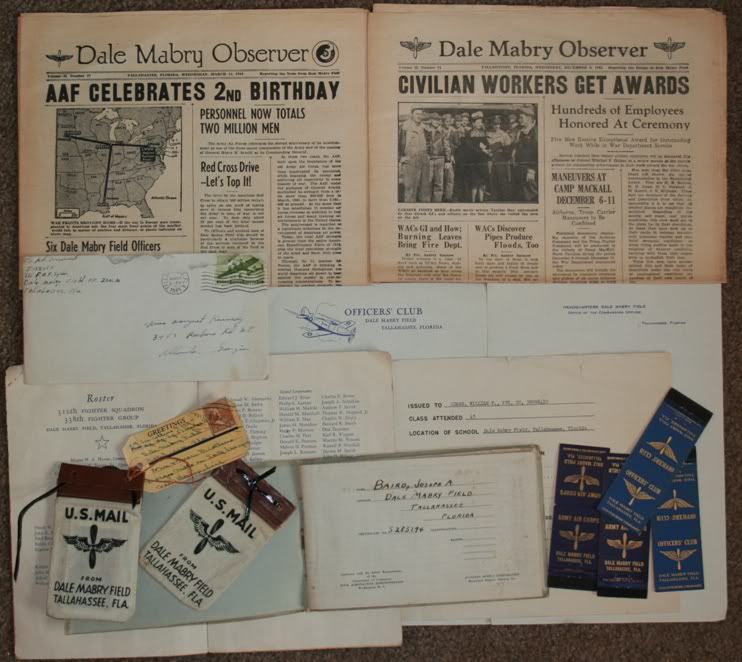
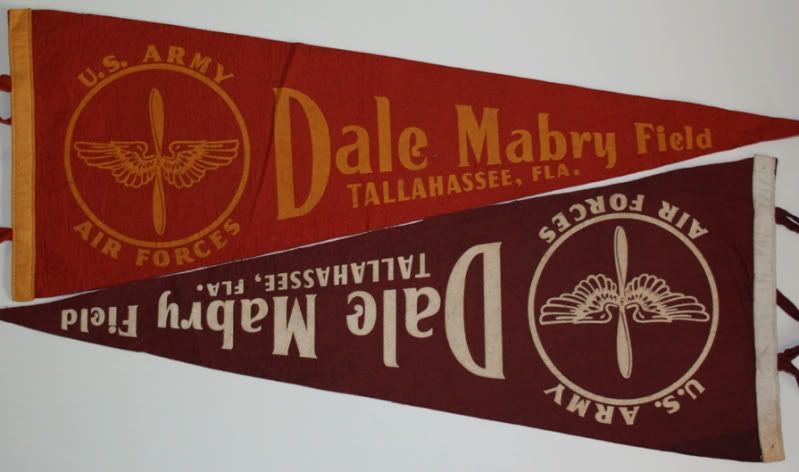

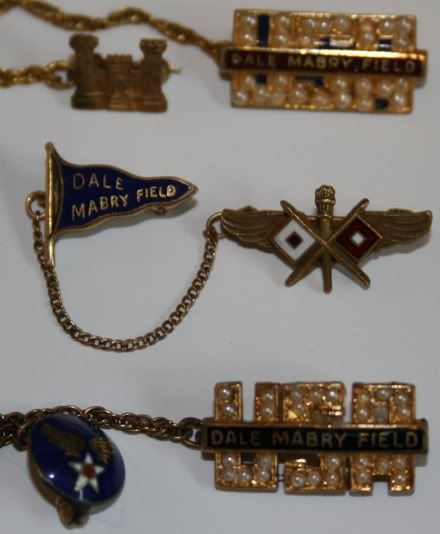
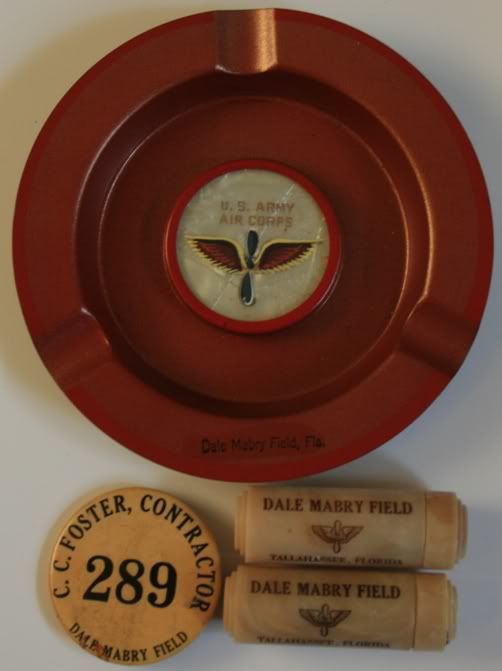
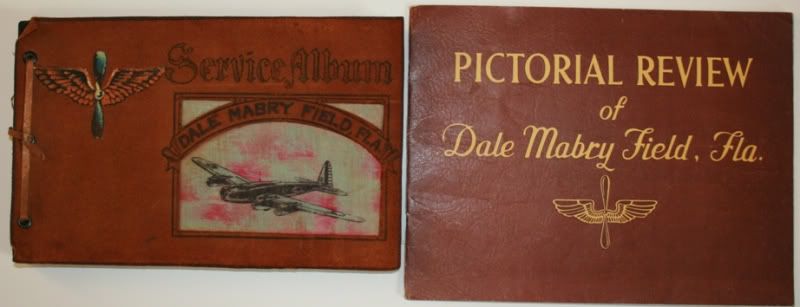
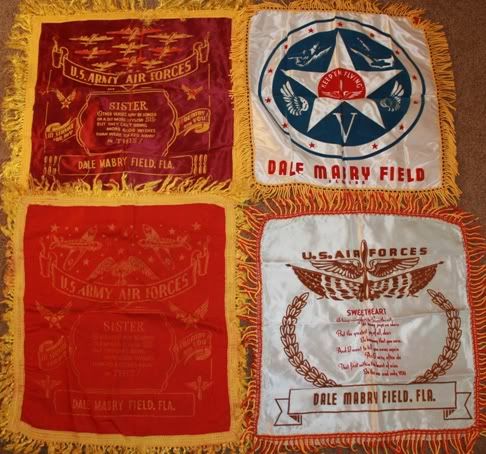
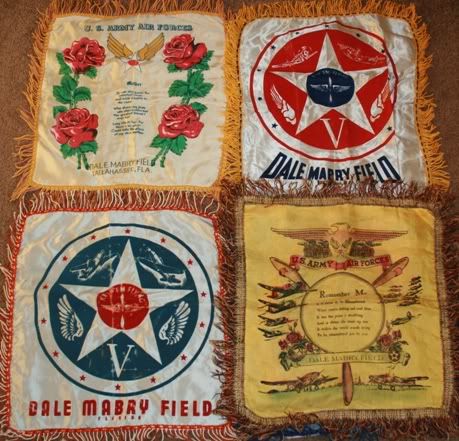

I live in WA state now but I collect stuff from the field to this day. There was also an amphibious base on the coast called Camp Gordon Johnston. There’s a museum near the location of that camp today: http://www.campgordonjohnston.com/
And just for the heck of it, here’s some of the Mabry AAF stuff I have in my collection:









Re: Your home town during WW2
Wed Feb 22, 2012 11:56 pm
Lancaster, TX, my home town, made Tucker-Sherrod Colt Dragoons during the Civil War, but wasn't doing anything "special" during WWII beyond many of the town's men of age enlisting, continuing a tradition started during the Civil War of the town's men enlisting or volunteering before being drafted.
Re: Your home town during WW2
Thu Feb 23, 2012 8:19 am
Newport News, Virginia! The birthplace of the Ranger, Yorktown, Enterprise, Hornet, Essex, Yorktown II, Intrepid, Hornet, Franklin, Ticonderoga, Randolph, Boxer, Pennsylvania, Mississippi, Maryland, Indiana, and dozens of cruisers, destroyers, and other fleet units.
The glorious history of the US Navy in WWII could not have been written without the efforts of men like my grandfather, Marcus F. Ritger, who helped lay the deck of the original Yorktown as an apprentice, and who worked on the hull designs of every carrier from the original Hornet up through the USS Eisenhower (hull 600, CV-69) before passing away suddenly from a heart attack at work in August 1975.
And of course, Langley Field is just a few miles down the road from us. As Russ points out, we've got so much history around here, you can't swing a short stick without hitting something of note. And I **LOVE IT!!!**
And I **LOVE IT!!!**
The glorious history of the US Navy in WWII could not have been written without the efforts of men like my grandfather, Marcus F. Ritger, who helped lay the deck of the original Yorktown as an apprentice, and who worked on the hull designs of every carrier from the original Hornet up through the USS Eisenhower (hull 600, CV-69) before passing away suddenly from a heart attack at work in August 1975.
And of course, Langley Field is just a few miles down the road from us. As Russ points out, we've got so much history around here, you can't swing a short stick without hitting something of note.